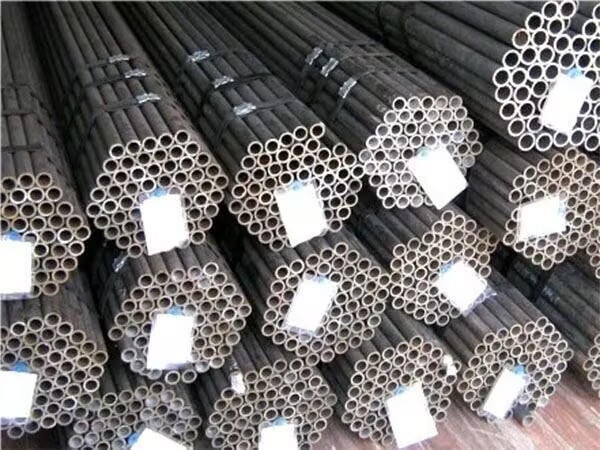
Chemical composition:
|
Materials |
C |
Mn |
P |
S |
Si |
|
ST35 |
≤ 0.17 |
0.40-0.80 |
0.025 |
0.025 |
≤ 0.35 |
|
ST45 |
≤ 0.21 |
0.40-0.80 |
0.025 |
0.025 |
≤ 0.35 |
|
ST52 |
≤ 0.22 |
1.30-1.60 |
0.025 |
0.025 |
≤ 0.55 |
Mechanical properties:
|
Materials |
Yield strength |
Tensile strength |
Elongation |
|
ST35 |
≥ 235 |
340-470 |
≥ 25 |
|
ST45 |
≥ 255 |
410-530 |
≥ 21 |
|
ST52 |
≥ 355 |
490-630 |
≥ 18 |
Production technology
DIN 2391 seamless precision steel pipes are manufactured by cold drawing or cold rolling processes. The following processes should be met during production:
Cold working (hard) : The pipe does not need to undergo heat treatment after the final cold forming. Therefore, it has quite high deformation resistance.
Cold working (soft) : cold drawing after final heat treatment with limited deformation. A certain degree of cold forming (e.g. bending, expansion) can be achieved with appropriate further processing.
Cold working and stress relief: Heat treatment is carried out after the last process of cold forming, and under appropriate processing conditions, the increase in residual stress is conducive to forming and machining to a certain extent.
Annealing: The final cold forming process is followed by annealing in a controlled atmosphere.
Normalization: The final cold forming process is followed by annealing above the upper transition point in a controlled atmosphere.
Main features and advantages
High dimensional accuracy: The cold drawing process and strict tolerance control ensure high precision.
Excellent surface quality: smooth internal and external surfaces, no oxide skin, suitable for demanding machining and hydraulic systems.
Excellent mechanical properties: the material has both strength and plasticity, and ADAPTS to the application needs of different pressures and loads.
Diversified heat treatment states: to meet the specific process needs of users, such as high temperature or high pressure resistant environments.
Typical application
Hydraulic systems: The manufacture of hydraulic cylinders, oil cylinders and cylinders, taking advantage of their high surface quality and good processability.
Automotive industry: Manufacture key components such as drive shafts and suspension systems.
Machinery manufacturing: production of gears, bearings and precision parts.
Construction and engineering: For high-strength structural components such as support columns and frames.
Conclusion
DIN 2391 seamless precision steel pipe has become an important material in modern industry due to its superior mechanical properties, high dimensional accuracy and a variety of heat treatment states. Its wide range of applications in hydraulic systems, automotive parts and machinery manufacturing reflects its high quality and versatility.